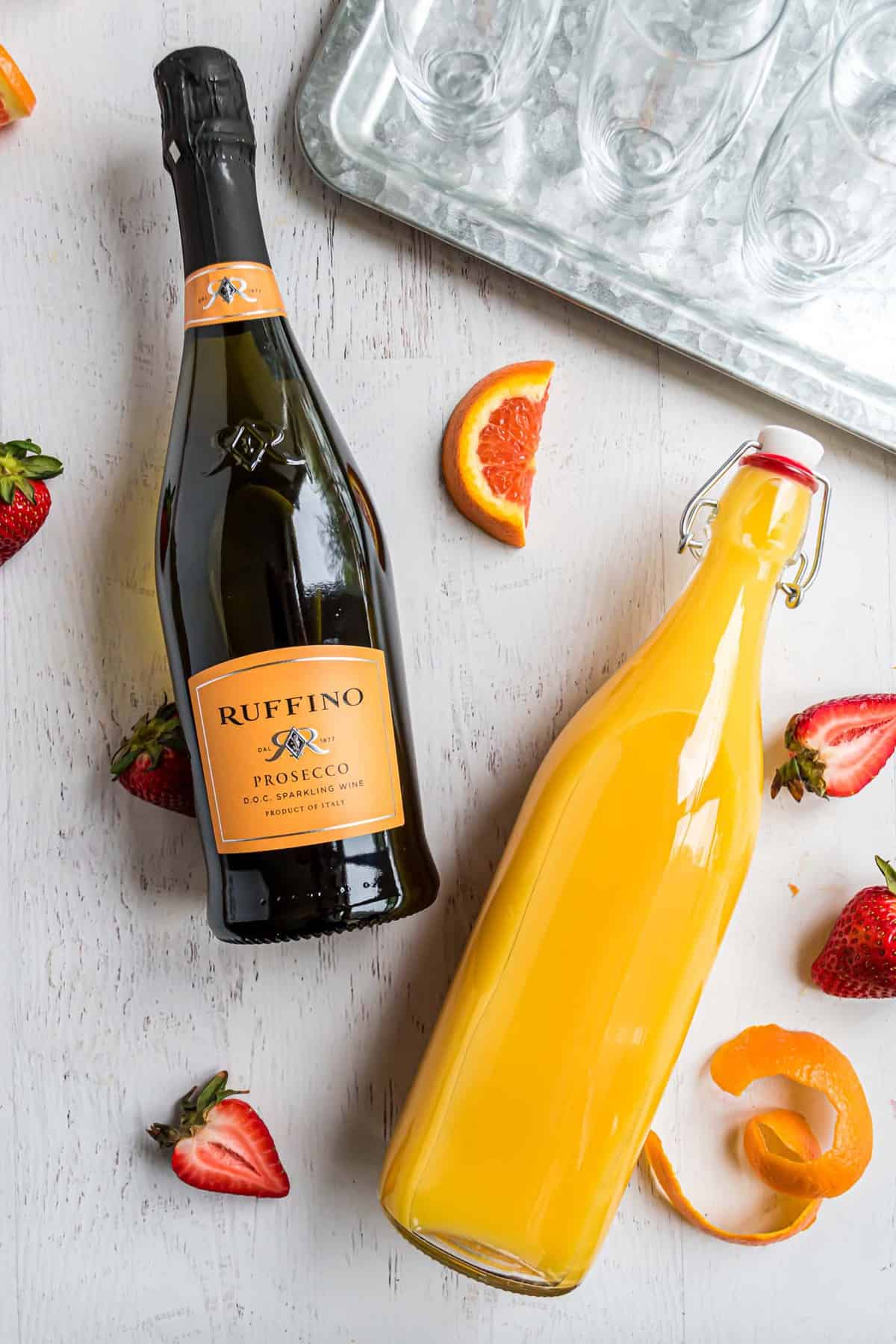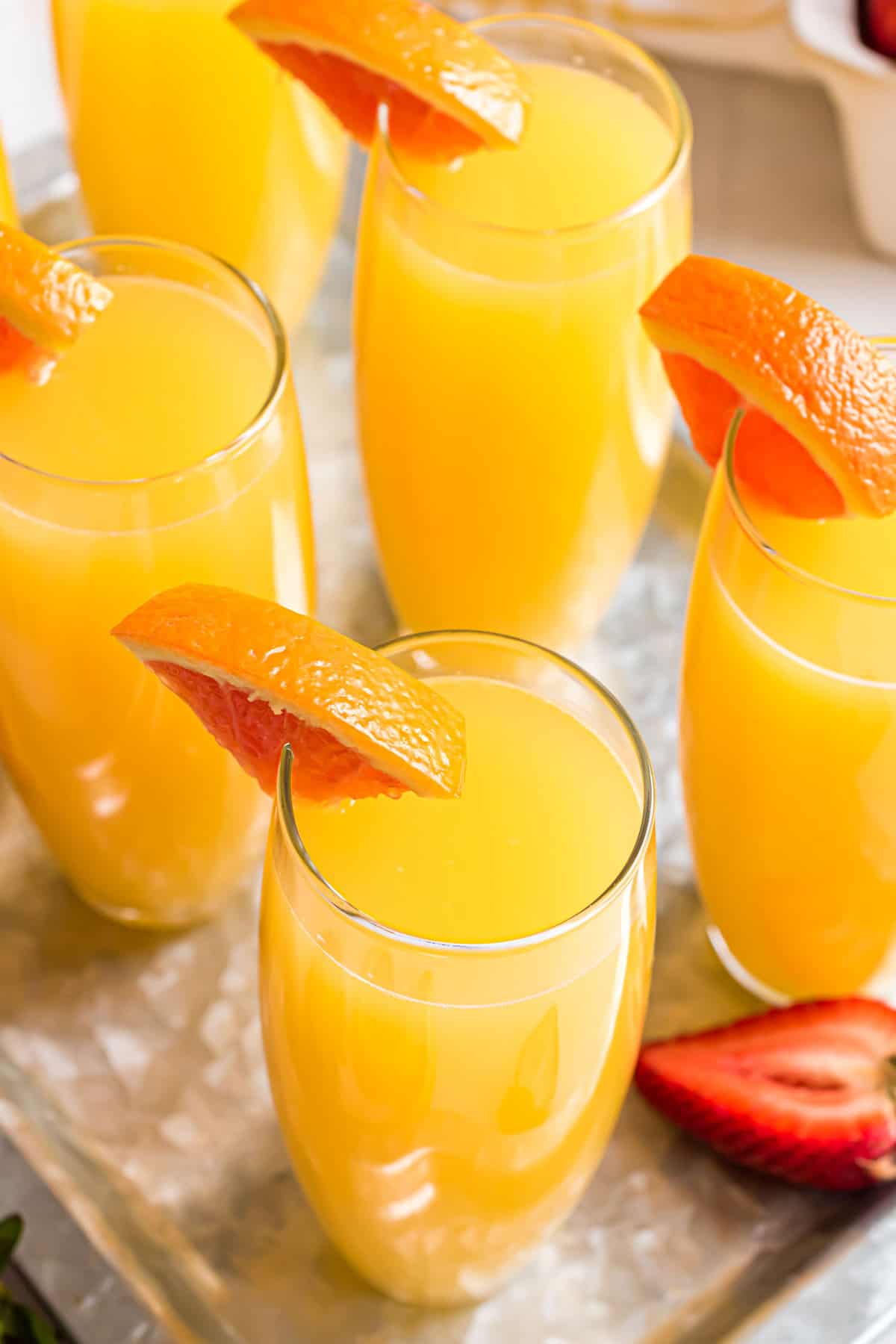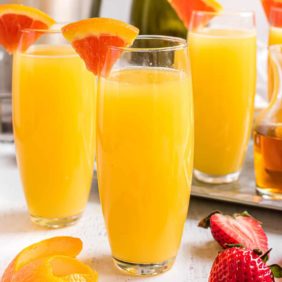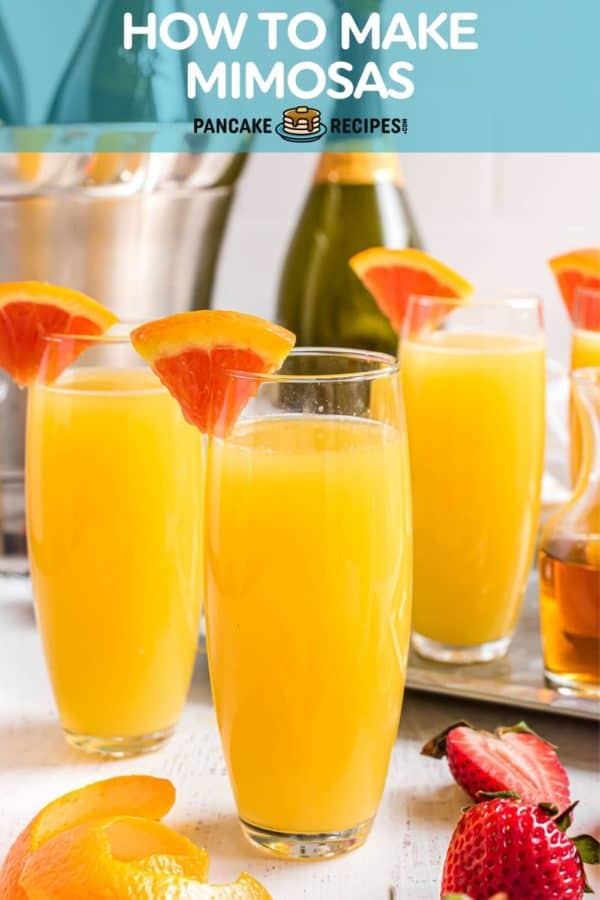Mimosa Recipe (How to make the BEST mimosa!)
Learning to make the BEST mimosa has never been easier with just 2 ingredients and a mimosa recipe that also provides tips and variations! Enjoy a light, refreshing, fizzy cocktail that is sure to add class to all of your celebratory brunches!

Enjoying a festive energizing cocktail that can brighten any day is exactly what we love about a classic mimosa. It’s always a welcome addition to any menu, big or small!
About this recipe
The best mimosas have 3 major components. Orange juice, sparkling wine, and a reason to cheers!
The best recipe for a mimosa, however, has just 2 simple ingredients. Fresh OJ and your choice of either chilled champagne or prosecco (or any sparkling white wine). It’s that easy! This recipe has the unique optional add-in of Grand Marnier because an orange-scented liqueur just makes sense.
There’s something so fun about sipping on a refreshing glass of mimosa with a group of your closest friends! Whether you’re gathered for a wedding shower, a baby shower, fancy brunch, or a family celebration for Easter, Mother’s Day, or the 4th of July, the combination of fresh orange juice and fizzy bubbles gives life to any party!
Try serving a mimosa with anything from classic buttermilk pancakes, to a fun and festive brunch board, to a sheet pan breakfast hash. You can’t go wrong!

What you need
- Dry Champagne – You can also use Prosecco, Cava, or other dry sparkling wine. Make sure it’s well chilled.
- Orange Juice – Pulp free orange juice, either store-bought or freshly squeezed and strained. The pulp tends float to the top of the bubbles and stick on the sides of the glasses, so while it’s still delicious, it isn’t as visually appealing.
- Grand Marnier – This is an optional ingredient, if you want to step up the intensity a little. Triple sec would also work but we recommend Grand Marnier.

How to make it
Slowly pour in champagne until a flute glass is about half full.
Tip: Hold the glass at a slight angle while pouring champagne or prosecco. This reduces the amount of bubbles created so you can fill your glasses a little more quickly.

Top off with orange juice.

Lastly, if desired, add Grand Marnier in each glass. Do not stir, as that will cause the prosecco or champagne to become flat. Serve immediately.
FAQs
If you’re feeling all kinds of fancy and you happen to have a bottle of champagne lying around and don’t mind combining it with orange juice, by all means, use it. However, the practical choice is to opt for the much more affordable Prosecco (Italy) or Cava (Spain). They are both reasonably priced, dry sparkling wine that tastes just as fabulous with the orange juice.
The meaning behind the word mimosa comes from its resemblance in color to a plant, shrub, or tree in the mimosa family that can be found in tropical climates. The bright yellow drink is named after the bright yellow mimosa flower!
While both are sparkling wines, they are different in a few ways. Champagne is french, originating in the Champagne region of France, whereas prosecco originates in Italy. There is a very different price point between the two based on their process of fermentation. Prosecco uses a process that is more time and labor-efficient, costing less money to make. Champagne uses a traditional, more hands-on process, therefore considered more expensive to make. Prosecco also has a bit of a sweeter note than Champagne does.
Very daintily, like you’re about to serve a member of the Downton Abbey family. You want to hold your glass at an angle and begin by pouring the sparkling wine first. This is so that you’re keeping all of the bubbles intact, but you’re still able to control it from overflowing. Once the orange juice gets added, it mixes all on its own. Don’t stir any further or you’ll create more fizz and perhaps have an overflow.
How to make these mimosas your own
- Use different juices. Did you know that a mimosa can be made with sparkling wine and any juice, citrus, or otherwise? OJ is traditional, but if you’re feeling adventurous try blood orange, pineapple, grapefruit, cranberry, pomegranate, or mango! In fact, you could add a splash of any of these to the orange juice itself. In the fall season, you might want to try an apple cider mimosa.
- Set up a mimosa bar with a variety of different juices for people to sample.
- To add a little garnish for presentation, add a slice of orange to the rim.
- Use cold, good quality, fresh orange juice, free from pulp for best results and tastiest experience.
- Make a virgin mimosa by swapping the sparkling wine with sprite, lime soda, or even flavored sparkling water. Check out our recipe for a mimosa mocktail.

Other beverages for brunch

Get the Recipe: Mimosa
Ingredients
- 1 bottle dry champagne, prosecco, cava, or other dry sparkling wine, chilled (750 ml)
- 3 cups pulp-free orange juice (or fresh squeeze orange juice, strained) (750 ml)
- 1/2 cup Grand Marnier, optional (120 ml)
Instructions
- Holding the champagne flute at a slight angle, slowly pour in champagne until glass is about half full. Top off with orange juice, and if desired, 1 tablespoon Grand Marnier in each glass. Do not stir.
- Serve immediately.
Video
Notes
- To add a little garnish for presentation, add a slice of orange to the rim.
- Use cold, good quality, fresh orange juice, free from pulp for best results and tastiest experience.
- Make a virgin mimosa by swapping the sparkling wine with sprite, lime soda, or even flavored sparkling water.

